ISO 639-3 cia | Native speakers 79,000 (2005) Glottolog ciac1237 | |
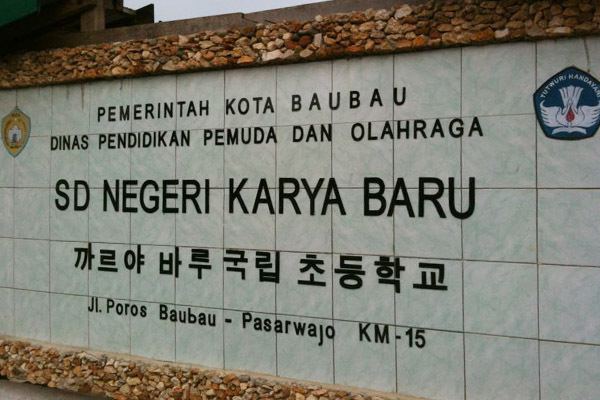 | ||
Language family AustronesianMalayo-PolynesianNuclear MPCelebicMuna–ButonButonCia-Cia Writing system LatinHangul (abandoned)Gundhul (historical) | ||
Hangul as the official script for the cia cia language in indonesia
Cia-Cia (Bahasa Ciacia), also known as Buton(ese), is an Austronesian language spoken principally around the town of Bau-Bau on the southern tip of Buton Island off the southeast coast of Sulawesi in Indonesia.
Contents
- Hangul as the official script for the cia cia language in indonesia
- Demographics
- Geographic distribution
- Name
- Dialects
- Orthography
- Words
- Verbs
- Nouns
- Common phrases
- References
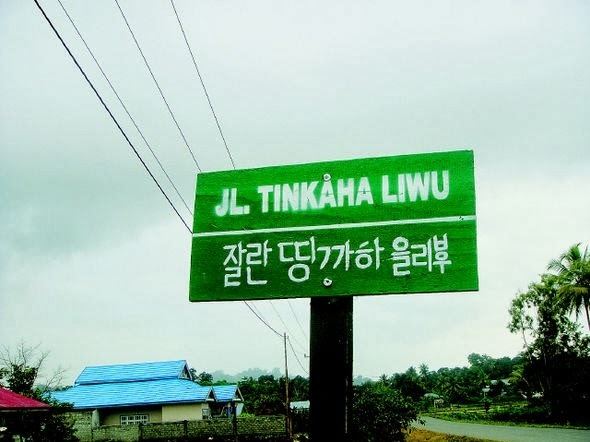
In 2009, the language gained international media attention as the town of Bau-Bau was teaching children to read and write Cia-Cia in Hangul, the Korean alphabet, and the mayor consulted the Indonesian government on the possibility of making the writing system official. However, the project was abandoned in 2012.
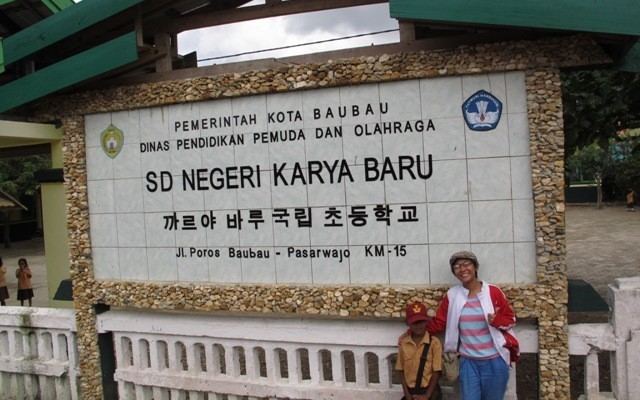
Demographics
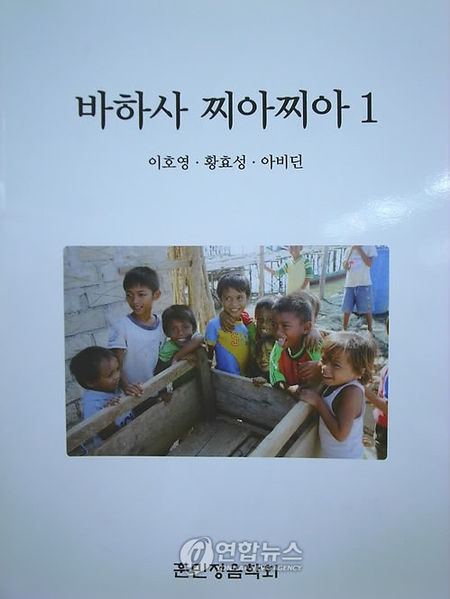
As of 2005 there were 80,000 speakers. Speakers also use Wolio, which is closely related to Cia-Cia, as well as Indonesian, the national language of Indonesia. Wolio is falling into disuse as a written language among the Cia-Cia, as it is written using the Arabic script and Indonesian is now taught in schools with the Latin script.
Geographic distribution
Cia-Cia is spoken in Southeast Sulawesi, south Buton Island, Binongko Island, and Batu Atas Island.
According to legend, Cia-Cia speakers on Binonko descend from Butonese troops sent by a Butonese Sultan.
Name

The name of the language comes from the negator cia "no". It is also known as Buton(ese), Butung, and in Dutch Boetoneezen, names it shares with Wolio, and as South Buton or Southern Butung.
Dialects
The language situation on the island of Buton is very complicated and not known in great detail.
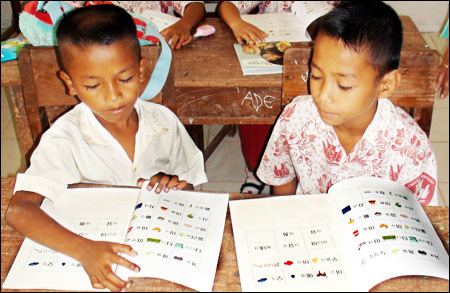
Dialects include Kaesabu, Sampolawa (Mambulu-Laporo), Wabula (with its subvarieties), and Masiri. The Masiri dialect shows the greatest amount of vocabulary in common with the standard dialect. Konisi & Hidayat discuss two dialects, Pesisir and Pedamalan; Pedamalan has gh in native words where Pesisir has r, but has r in loan words.
Orthography
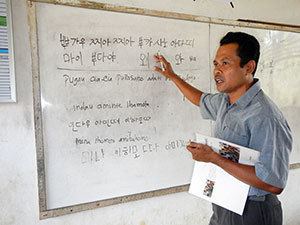
Cia-Cia was once written in a Jawi-like script, called Gundhul, based on Arabic with five additional consonant letters but no signs for vowels.

In 2009, the language gained international media attention with a decision by the town of Bau-Bau to adopt Hangul as the modern script for Cia-Cia, beginning a pilot project to teach a class of fifty third-grade students the alphabet using textbooks created by the Hunminjeongeum Society in Korea.
However, Indonesian Ambassador to Korea Nicholas T. Dammen and Professor Chun Tai-hyun, who first proposed the idea of adopting the Korean alphabet to the Bau-bau mayor in 2007, discounted reports on Korea's export of Hangul. They told The Korea Times in January 2010 that Hangul had yet to be officially adopted by the Cia-Cia because Bau-Bau Mayor Amirul Tamim had not taken due procedures necessary for a foreign alphabet to be recognized as an official writing system. In October 2010, a town official told The Korea Times that the mayor had been consulting the Indonesian government on adopting Hangul, which would be an exception to the stipulation in Indonesia's Basic Law that all tribal languages must be recorded in Roman letters to preserve national unity. Chun Tai-hyun said that reports of official adoption had been based on a mistranslation of the mayor's statement about this consultation. However, by that time, the number of students learning Hangul had risen to 190.
An example of the proposed Hangul script:
Words
The numerals 1–10 are:
